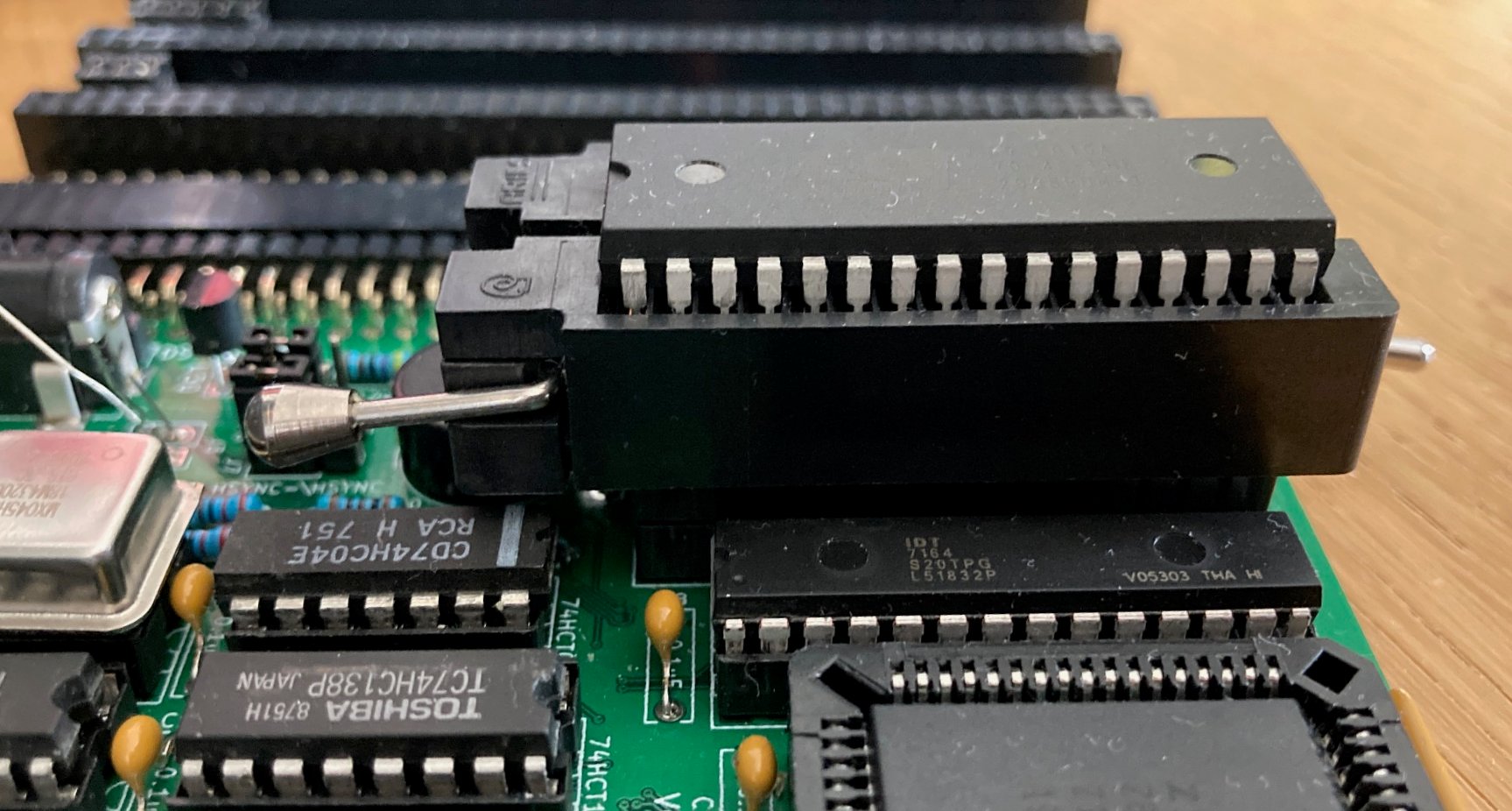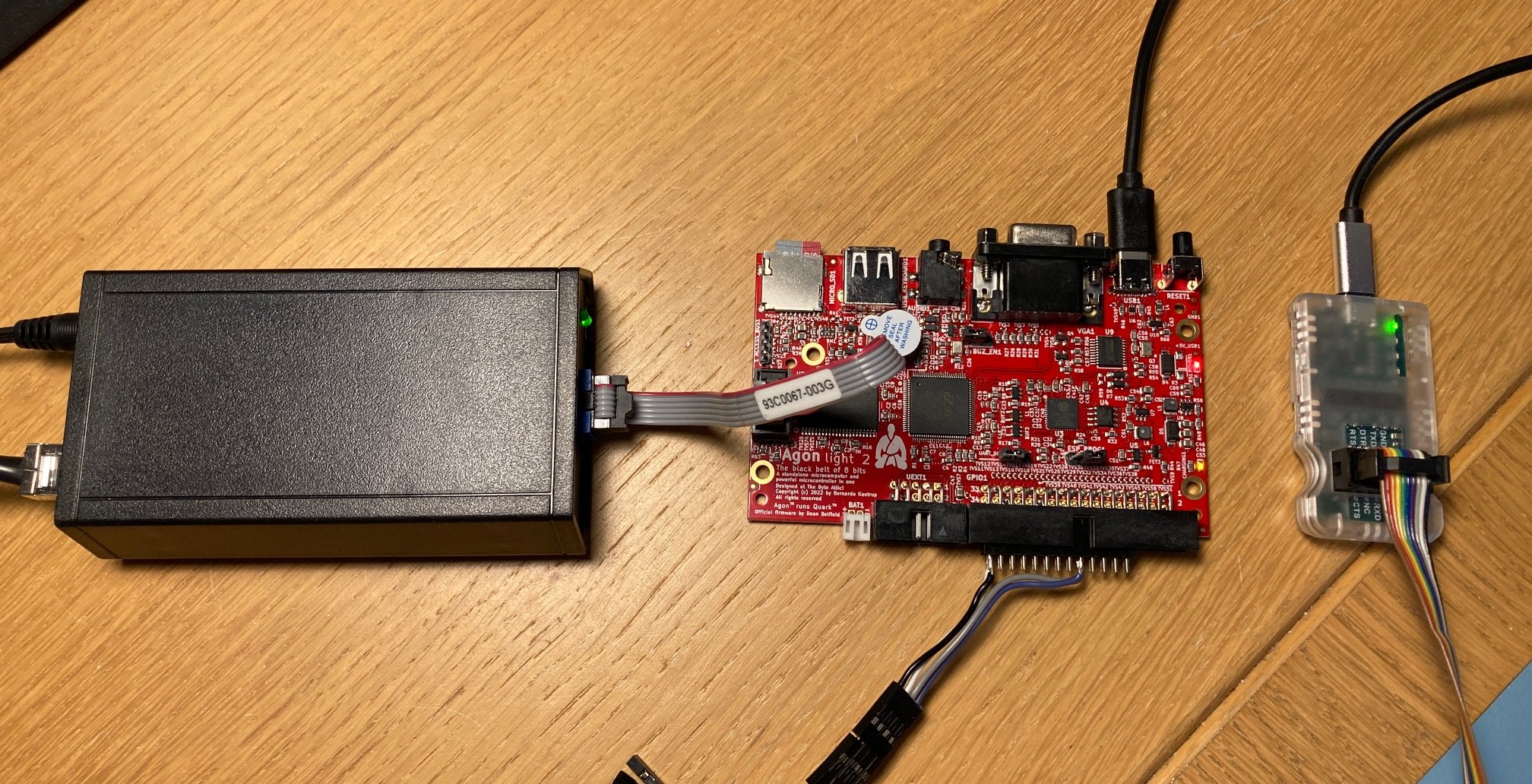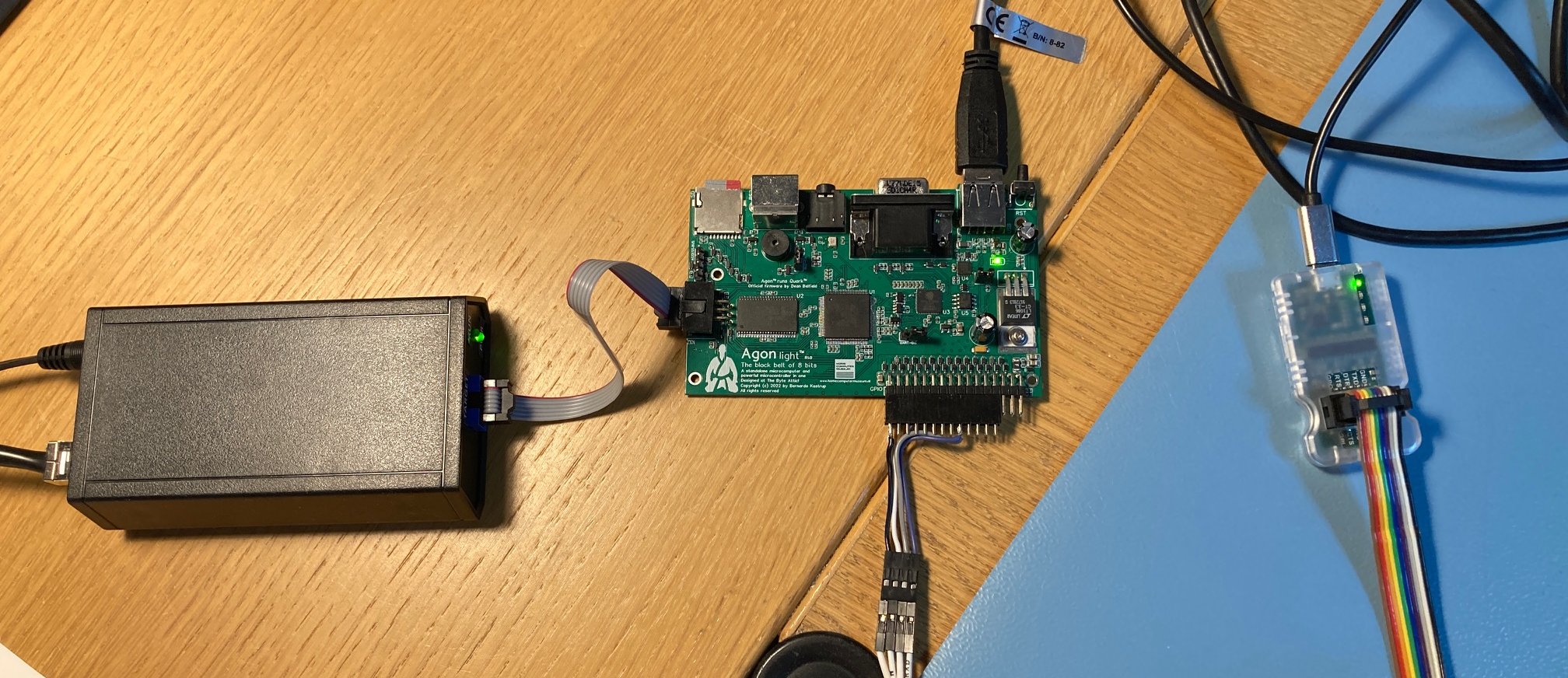
Setting up the 6845 involves filling in 16 registers so that the 6845
can generate the correct timing signals for the desired resolution.
The available data sheets provide more information on how to calculate
the needed values. But since that’s a tedious process, I decided to
write a small Python application that could calculate those values for
me which you can find below and which was surprisingly accurate.
Only R7 (Vertical Sync Position) was of a little bit of sometimes and
needed a…

The design I came up with probably contains few surprises and is inspired
by various designs that are floating around on the internet.

After a long hiatus, which is easily explained as I’ve been working on my
most complex project yet. And even more nostalgia I’m afraid… For the
last few months I’ve been working on creating an old fashioned video terminal
(circa 1980’s) using chips of that era as well (I inherited a ton of TTL
chips when my work decided they didn’t need their small electronics lab
anymore.). It’s my first digital project in decades and it might still be
a bit rough…

More nostalgia… A few weeks ago I bought the, RC2014
compatible, SC203 Modular Z180 Computer Kit for RC2014
kit on Tindie which uses the Zilog Z180,
512K fast static RAM and 512k ROM (loaded with ROMWBW).
To this I added a Compact Flash Module
as well for mass storage. With these components it’s possible to create a CP/M
compatible system (just add a terminal) running on real hardware of that era.

A few years ago, Elektor Magazine had an
interesting DAC project
with high end aspirations based on the Burr-Brown (now Texas Instruments)
1794 DAC for a modest price.















